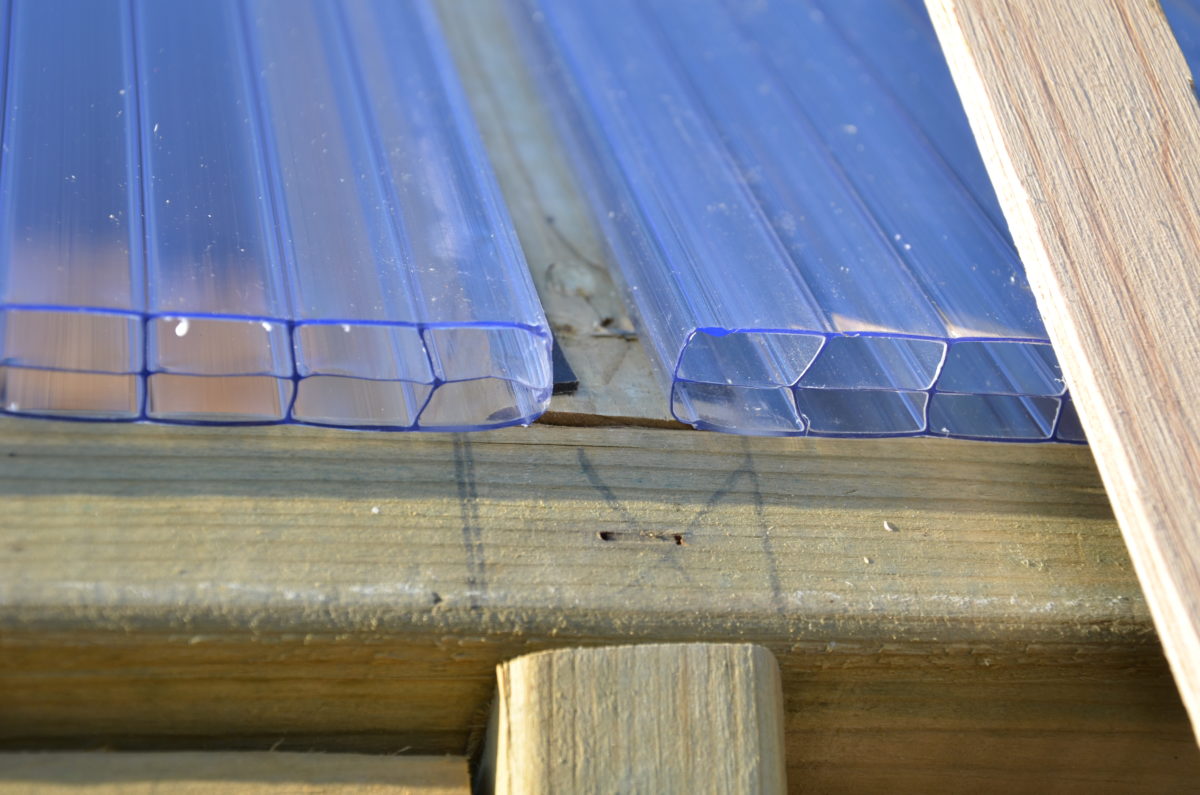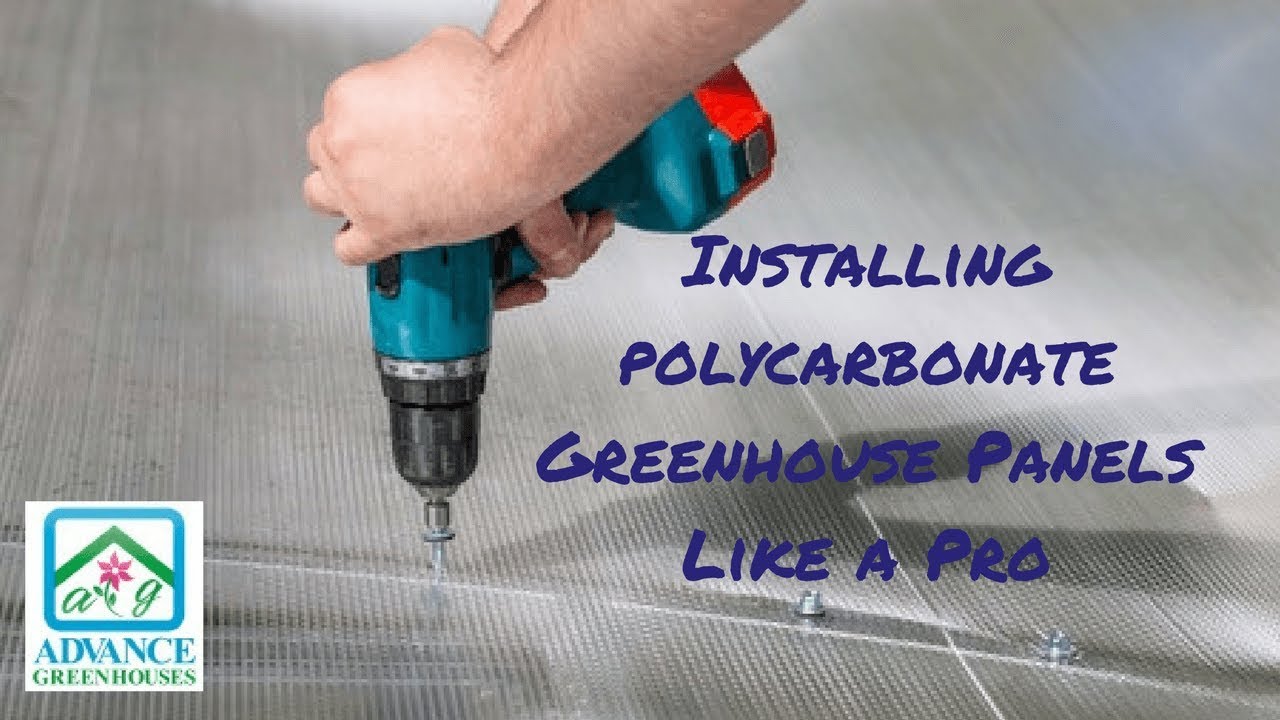To install polycarbonate sheets on a greenhouse, start by measuring and cutting the sheets to fit your frame. Secure them using screws and washers, ensuring a tight seal.
Installing polycarbonate sheets on your greenhouse enhances insulation and light diffusion. This durable material offers excellent protection against UV rays while maintaining optimal growing conditions for plants. Polycarbonate sheets come in various thicknesses and colors, allowing customization based on your greenhouse’s needs.

Credit: growingnorth.ca
The installation process is straightforward, making it accessible for DIY enthusiasts. Properly installed sheets can last for years, providing both functionality and aesthetic appeal. This guide will walk you through each step, ensuring your greenhouse remains a thriving environment for your plants while maximizing sunlight exposure.
How to Install Polycarbonate Sheets on Greenhouse : Step by Step Guide
Introduction To Polycarbonate Sheets For Greenhouses
Polycarbonate sheets are a great choice for greenhouses. They offer many advantages over traditional glass. First, they are lighter and easier to handle. This makes installation much simpler.
These sheets provide excellent insulation. They help maintain a stable temperature inside the greenhouse. This is important for plant growth.
Another benefit is their durability. Polycarbonate is resistant to impact and weather. It won’t shatter like glass, which means less worry.
UV protection is another key feature. This helps prevent harmful rays from damaging plants. Overall, polycarbonate sheets are a smart choice for any greenhouse.
Tools And Materials Needed
To install polycarbonate sheets on a greenhouse, gather these essential tools:
- Measuring tape
- Utility knife
- Drill
- Screws
- Sealant
- Safety goggles
- Gloves
Selecting the right polycarbonate sheets is crucial. Choose sheets that are UV-protected. This will ensure durability and prevent yellowing. Consider the thickness for insulation. Thicker sheets provide better heat retention. Always check for warranties before purchase.
Preparing The Greenhouse Frame
Start by cleaning the greenhouse frame. Remove dirt, debris, and old materials. Use soap and water for thorough cleaning. Rinse well and let it dry completely.
Next, take accurate measurements of the frame. Measure the length and width where the polycarbonate sheets will go. Use a level to ensure the measurements are correct. This step is crucial for a proper fit.
For frame modification, check for any damaged areas. Fix any weak spots before installation. Adding extra support can help hold the sheets better. Make sure all edges are smooth to prevent damage.

Credit: coloradopolycarbonate.com
Cutting And Shaping Polycarbonate Sheets
Before starting, always prioritize safety. Use safety goggles and gloves while cutting polycarbonate sheets. A straightedge helps make clean cuts. Use a sharp utility knife or a circular saw. For curves, a jigsaw is ideal.
Make sure to measure carefully before cutting. Mark your lines clearly with a marker. Take your time to avoid mistakes. Cut along the lines slowly for a precise fit.
After cutting, check the edges. Smooth any rough parts with sandpaper. This step helps prevent injuries and ensures a better seal in your greenhouse.
Installing The Sheets Onto The Frame
To install polycarbonate sheets on your greenhouse frame, start by measuring the sheets. Make sure they fit snugly. Use screws or clips to secure the sheets. This helps prevent wind damage.
For securing the sheets, use silicone sealant at the edges. This seals gaps and keeps moisture out. It also improves insulation. Apply sealant evenly for the best results.
Check for loose areas around the sheets. Tighten screws if necessary. Regularly inspect the installation for any wear. This ensures a long-lasting greenhouse.
Finishing Touches
After installing polycarbonate sheets, it’s time for the finishing touches. Start with trimming excess material. Use a sharp utility knife for a clean cut. Make sure edges are even and neat.
For cleaning and maintenance, use a soft cloth and mild soap. Avoid abrasive cleaners that can scratch the surface. Rinse the sheets with water to remove any soap residue. Regular maintenance keeps your greenhouse looking fresh and clear.
Check for any signs of wear or damage. Replace any damaged sheets promptly to maintain structure. Proper care ensures your greenhouse remains functional and aesthetically pleasing.
Common Installation Mistakes To Avoid
Using incorrect sealing methods can lead to leaks. Always use the right sealant for polycarbonate sheets. Check the manufacturer’s instructions for best practices. Make sure to apply the sealant evenly to avoid gaps.
Avoiding sheet damage is crucial during installation. Always handle sheets with care to prevent scratches. Use soft cloths for cleaning. Avoid using sharp tools that can cause cuts or cracks.
Follow these steps to ensure a smooth installation:
| Tip | Description |
|---|---|
| Use protective gear | Wear gloves and goggles to prevent injury. |
| Check weather | Install on a calm day to avoid wind damage. |
| Measure carefully | Ensure all cuts are precise for a proper fit. |
Faqs On Installing Polycarbonate Sheets
Installing polycarbonate sheets in your greenhouse can enhance light diffusion and insulation. This guide addresses common questions, offering practical tips and step-by-step instructions for a successful installation. Discover how to secure and maintain these versatile sheets for optimal greenhouse performance.
Choosing Between Twin-wall And Multi-wall Sheets
Twin-wall sheets are lightweight and easy to install. They provide good insulation and block UV rays. Multi-wall sheets offer better insulation and strength. They can handle extreme weather conditions. Choose based on your greenhouse needs and budget.
Dealing With Condensation Issues
Condensation can build up inside polycarbonate sheets. This may lead to mold and plant issues. To reduce condensation, ensure proper ventilation in your greenhouse. Using anti-condensation films can also help. Regularly check for leaks around the edges of the sheets.

Credit: growingnorth.ca
Frequently Asked Questions
How Do I Cut Polycarbonate Sheets For My Greenhouse?
Cutting polycarbonate sheets is straightforward. Use a fine-toothed saw or a utility knife for clean cuts. Measure carefully before cutting to avoid waste. Always wear safety goggles to protect your eyes. Ensure you have a sturdy surface to work on for better accuracy.
What Tools Do I Need For Installation?
You’ll need basic tools for installing polycarbonate sheets. A measuring tape, utility knife, and a drill are essential. Additionally, a straight edge, clamps, and safety goggles will help ensure safety and precision. Having these tools ready will make your installation process smoother and more efficient.
Can Polycarbonate Sheets Withstand Harsh Weather?
Yes, polycarbonate sheets are designed for durability. They are impact-resistant and can withstand extreme temperatures. Their UV protection helps prevent yellowing and brittleness over time. This makes them ideal for greenhouses, providing a stable environment for your plants.
How Do I Secure Polycarbonate Sheets To The Frame?
Secure polycarbonate sheets using screws and washers. Drill holes in the sheets, ensuring they align with the frame. Use rubber washers to prevent leaks and provide a tight seal. This method ensures your sheets remain securely in place, protecting your greenhouse from the elements.
Conclusion
Installing polycarbonate sheets on your greenhouse can enhance its durability and energy efficiency. Following the right steps ensures a secure fit and maximum light transmission. With proper care and maintenance, your greenhouse will thrive for years to come. Enjoy the benefits of a well-constructed greenhouse environment for your plants.

